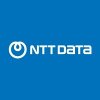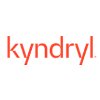
i
Movate
Filter interviews by
Movate Network Engineer Interview Questions and Answers
30 Interview questions
The TCP/IP model is a framework for understanding network communication, consisting of four layers: Application, Transport, Internet, and Link.
Application Layer: Interfaces with end-user applications (e.g., HTTP for web browsing).
Transport Layer: Manages end-to-end communication (e.g., TCP for reliable transmission, UDP for faster, connectionless communication).
Internet Layer: Handles routing of data packets acros...
ARP stands for Address Resolution Protocol. It is used to map IP addresses to MAC addresses on a local network.
ARP is used to find the MAC address of a device based on its IP address.
It works by broadcasting an ARP request packet on the local network asking for the MAC address associated with a specific IP address.
The device with the matching IP address responds with its MAC address, allowing communication to occu...
GPON architect is a passive optical network technology that uses fiber-optics to deliver high-speed internet access.
GPON stands for Gigabit Passive Optical Network.
It uses a point-to-multipoint architecture to provide fiber to the home or business.
GPON technology allows for high-speed internet access, VoIP, IPTV, and other services over a single fiber connection.
It uses a combination of OLT (Optical Line Terminal)...
WAN stands for Wide Area Network and covers a large geographical area, while LAN stands for Local Area Network and covers a small area like a home, office, or building.
WAN covers a larger geographical area, such as cities, countries, or even continents, while LAN covers a smaller area like a single building or campus.
WAN typically uses public infrastructure like leased lines, while LAN uses private infrastructure ...
Data flows through networks in packets, following a specific path determined by routing protocols and switches.
Data is broken down into packets before being transmitted over a network.
Each packet contains information such as source and destination addresses.
Routing protocols determine the best path for packets to reach their destination.
Switches forward packets based on MAC addresses.
Data flows through different n...
The OSI model is a conceptual framework that standardizes the functions of a telecommunication or computing system into seven layers.
The OSI model stands for Open Systems Interconnection model
It helps in understanding how data is transferred over a network
Each layer has specific functions and interacts with adjacent layers
Examples of layers include physical layer, data link layer, network layer, etc.
VLAN stands for Virtual Local Area Network, a network of devices that behave as if they are connected to the same physical network, even though they may be located on different segments.
VLANs are used to segment network traffic and improve network performance and security.
They allow for logical grouping of devices based on factors such as department, function, or security requirements.
VLANs can span multiple switc...
A client can get an IP address through DHCP (Dynamic Host Configuration Protocol) or by manually configuring it.
DHCP (Dynamic Host Configuration Protocol) assigns IP addresses automatically to clients on a network
Clients can also manually configure their IP address, subnet mask, gateway, and DNS server
IP addresses can be obtained through IPv4 or IPv6 protocols
Packet flow between same network involves communication between devices within the same IP subnet.
Devices communicate directly without needing to go through a router.
Packet headers contain source and destination IP addresses for proper routing.
Switches forward packets based on MAC addresses within the same network.
Firewalls may inspect and filter packets within the same network.
Examples: File sharing between devic...
When we type www.google.com, the browser sends a request to the DNS server to resolve the domain name into an IP address.
The browser sends a DNS query to the DNS server.
The DNS server looks up the IP address associated with the domain name.
The DNS server responds with the IP address.
The browser establishes a TCP connection with the IP address.
The browser sends an HTTP request to the IP address.
The server at the IP...
Movate Network Engineer Interview Experiences
36 interviews found
(2 Questions)
- Q1. Basic questions about ip address and mac addresses
- Q2. Switch, router, ip class, and some scenario based questions
Interview Preparation Tips
I appeared for an interview in Mar 2025, where I was asked the following questions.
- Q1. Good Communication Skill is mandatory!
- Q2. Networking knowledge is required.
Interview Preparation Tips
(1 Question)
- Q1. Explain TCP IP Model
- Ans.
The TCP/IP model is a framework for understanding network communication, consisting of four layers: Application, Transport, Internet, and Link.
Application Layer: Interfaces with end-user applications (e.g., HTTP for web browsing).
Transport Layer: Manages end-to-end communication (e.g., TCP for reliable transmission, UDP for faster, connectionless communication).
Internet Layer: Handles routing of data packets across net...
I applied via LinkedIn and was interviewed in Feb 2024. There were 2 interview rounds.
(1 Question)
- Q1. Tell me about yourself. Previous role
- Ans.
I am a dedicated Network Engineer with 5 years of experience in designing and managing robust network infrastructures.
Managed a team of 3 engineers to optimize network performance, resulting in a 30% increase in efficiency.
Implemented a new routing protocol that reduced latency by 20% in a multi-site network.
Conducted regular network assessments and troubleshooting, leading to a 15% decrease in downtime.
Collaborated wi...
(1 Question)
- Q1. Diff between native vlan and default vlan and DHCP process
- Ans.
Native VLAN is used for untagged traffic, default VLAN is used when no VLAN is specified, DHCP process involves client requesting IP address from server.
Native VLAN is used for untagged traffic on a trunk port
Default VLAN is used when no VLAN is specified, typically VLAN 1
DHCP process involves client sending a DHCP discover message, server offering an IP address, client requesting the offered IP address, and server ack...
Interview Preparation Tips
Skills evaluated in this interview
I applied via Walk-in and was interviewed in Feb 2024. There were 3 interview rounds.
I am going to attend
(1 Question)
- Q1. After complete the aptitude test
(1 Question)
- Q1. After techincal
(1 Question)
- Q1. About tcp ip, osi model,protocols
(2 Questions)
- Q1. Tcp udp vpn vlan subnet
- Q2. SSL IPSEC vpn sd wan
Interview Preparation Tips
I applied via Approached by Company and was interviewed in Aug 2023. There were 2 interview rounds.

(2 Questions)
- Q1. Networking basics
- Q2. Core concepts, Networking fundamentals, network security
I applied via Approached by Company and was interviewed in Jan 2023. There were 3 interview rounds.

(5 Questions)
- Q1. What are the Osi layers
- Ans.
The OSI (Open Systems Interconnection) model is a conceptual framework that standardizes the functions of a communication system into seven layers.
The seven layers of the OSI model are: Physical, Data Link, Network, Transport, Session, Presentation, and Application.
Each layer has a specific function and interacts with the layers above and below it.
The Physical layer deals with the physical transmission of data, such as...
- Q2. Explain about each layer
- Ans.
The OSI model has 7 layers that define how data is transmitted over a network.
Layer 1 (Physical): Deals with the physical connection between devices and transmission of raw data.
Layer 2 (Data Link): Provides error-free transfer of data frames between nodes on the same network.
Layer 3 (Network): Handles the routing of data packets between different networks.
Layer 4 (Transport): Ensures reliable data transfer between end...
- Q3. What is TCP/IP protocol
- Ans.
TCP/IP is a set of communication protocols used for connecting network devices and transmitting data over the internet.
TCP/IP stands for Transmission Control Protocol/Internet Protocol
It is a suite of communication protocols used for connecting network devices
TCP is responsible for ensuring reliable transmission of data
IP is responsible for routing data packets between network devices
Examples of TCP/IP applications inc...
- Q4. What is DND in networking
- Ans.
DND stands for 'Do Not Disturb' in networking.
DND is a feature that can be enabled on a device or network to prevent incoming calls or messages.
It is commonly used in VoIP systems to prevent incoming calls during important meetings or presentations.
DND can also be used to block incoming traffic on a network, such as during maintenance or security updates.
- Q5. What is DHCP in network
- Ans.
DHCP stands for Dynamic Host Configuration Protocol. It is a network protocol that automatically assigns IP addresses to devices.
DHCP is used to simplify network administration by automatically assigning IP addresses to devices.
It eliminates the need for manual IP address configuration.
DHCP servers can also assign other network configuration information such as subnet mask, default gateway, and DNS server addresses.
DHC...
(3 Questions)
- Q1. Could you work on shifts
- Ans.
Yes, I am willing to work on shifts.
I am flexible and adaptable to different work schedules.
I understand the importance of 24/7 network support and am ready to contribute.
I have previous experience working on shifts and can handle the challenges that come with it.
- Q2. How you learn while working
- Ans.
I learn while working by actively seeking out new information, collaborating with colleagues, and reflecting on my experiences.
I actively seek out new information by reading industry publications, attending conferences, and participating in online forums.
I collaborate with colleagues by sharing knowledge, asking for feedback, and working on projects together.
I reflect on my experiences by analyzing the outcomes of my w...
- Q3. How could you contribute to team
- Ans.
I can contribute to the team by leveraging my technical expertise and strong communication skills.
I have extensive knowledge and experience in network engineering, which allows me to effectively troubleshoot and resolve complex network issues.
I can collaborate with team members to design and implement network solutions that meet the organization's requirements.
I am skilled in documenting network configurations and proc...
Interview Preparation Tips
Skills evaluated in this interview
I applied via Naukri.com and was interviewed in Jul 2023. There was 1 interview round.
(1 Question)
- Q1. Explain about Sip call flow
- Ans.
SIP call flow is the sequence of events that occur during a Session Initiation Protocol (SIP) call.
SIP call flow involves several steps such as registration, session establishment, media negotiation, and call termination.
The call flow typically starts with a SIP client sending a REGISTER request to a SIP server to register its address.
Once registered, the client can initiate a call by sending an INVITE request to the s...
Top trending discussions






Movate Interview FAQs
The duration of Movate Network Engineer interview process can vary, but typically it takes about less than 2 weeks to complete.
Tell us how to improve this page.
Movate Interviews By Designations
- Movate Network Engineer Interview Questions
- Movate Technical Support Engineer Interview Questions
- Movate Senior Engineer Interview Questions
- Movate Engineer Interview Questions
- Movate Network Security Engineer Interview Questions
- Movate Trainee Interview Questions
- Movate Palo Alto TAC Engineer Interview Questions
- Movate GIS Engineer Interview Questions
- Show more
Interview Questions for Popular Designations
- Software Engineer Interview Questions
- Senior Engineer Interview Questions
- System Engineer Interview Questions
- Engineer Interview Questions
- NOC Engineer Interview Questions
- Senior Network Engineer Interview Questions
- Network Support Engineer Interview Questions
- Network Security Engineer Interview Questions
- Show more
Overall Interview Experience Rating
based on 23 interview experiences
Difficulty level
Duration
Network Engineer Interview Questions from Similar Companies
Movate Network Engineer Reviews and Ratings
based on 161 reviews
Rating in categories
|
Technical Support Engineer
1.5k
salaries
| ₹1.8 L/yr - ₹5.5 L/yr |
|
Senior Engineer
1.5k
salaries
| ₹4.3 L/yr - ₹10.1 L/yr |
|
Network Engineer
1.2k
salaries
| ₹3.5 L/yr - ₹8 L/yr |
|
Engineer
1.1k
salaries
| ₹2.2 L/yr - ₹6.9 L/yr |
|
Network Security Engineer
330
salaries
| ₹4 L/yr - ₹8.4 L/yr |

DXC Technology

Sutherland Global Services

Optum Global Solutions

Virtusa Consulting Services
- Home >
- Interviews >
- Movate Interview Questions

















